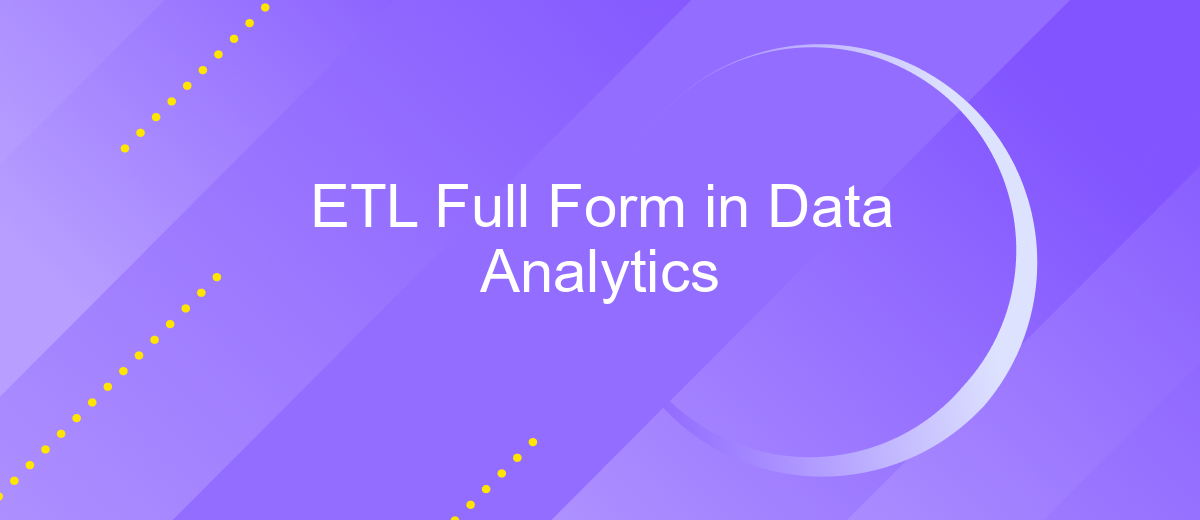ETL Full Form in Data Analytics
ETL stands for Extract, Transform, Load, a crucial process in data analytics. It involves extracting data from various sources, transforming it into a suitable format, and loading it into a data warehouse or database. This process ensures that data is clean, consistent, and ready for analysis, enabling organizations to make informed decisions based on accurate information.
Introduction
ETL, which stands for Extract, Transform, Load, is a crucial process in data analytics. It involves extracting data from various sources, transforming it into a suitable format, and loading it into a data warehouse or other storage systems. This process ensures that organizations can efficiently analyze and utilize data to make informed decisions.
- Extract: Data is collected from multiple heterogeneous sources.
- Transform: The extracted data is cleaned, formatted, and transformed into a usable format.
- Load: The transformed data is loaded into a target database or data warehouse.
ETL processes are essential for integrating data from different systems and ensuring its consistency and quality. Tools like ApiX-Drive can simplify the integration process by automating data extraction and transformation, making it easier for businesses to manage their data flows. By leveraging ETL, companies can gain valuable insights, enhance their decision-making processes, and improve overall operational efficiency.
What is ETL?

ETL stands for Extract, Transform, Load, and it is a crucial process in data analytics. This process involves extracting data from various sources, transforming it into a suitable format, and then loading it into a data warehouse or another destination for analysis. ETL helps in consolidating data from different systems, ensuring consistency, and improving data quality, which ultimately aids in making informed business decisions.
The ETL process can be automated using various tools and services, such as ApiX-Drive. ApiX-Drive enables seamless integration of multiple data sources, simplifying the extraction and transformation steps. With its user-friendly interface and robust features, businesses can efficiently manage their data workflows without extensive technical expertise. By leveraging services like ApiX-Drive, companies can streamline their ETL processes, saving time and resources while ensuring accurate and reliable data for analytics.
ETL Process

The ETL process, which stands for Extract, Transform, Load, is a crucial aspect of data analytics. It involves extracting data from various sources, transforming it into a suitable format, and then loading it into a data warehouse or other storage systems. This process ensures that data is accurate, consistent, and ready for analysis.
- Extract: Data is collected from multiple sources such as databases, APIs, and flat files. Services like ApiX-Drive can help automate the extraction process by integrating with various platforms.
- Transform: The extracted data is cleaned, normalized, and transformed into a suitable format. This step may involve filtering, aggregating, and enriching the data to meet specific business requirements.
- Load: The transformed data is then loaded into a target data warehouse, database, or data lake. This step ensures that the data is stored in a structured manner, ready for analysis and reporting.
By automating the ETL process, businesses can ensure that their data is always up-to-date and accurate. Tools like ApiX-Drive simplify the integration and automation of ETL workflows, allowing organizations to focus on deriving insights and making data-driven decisions.
Benefits of ETL

ETL (Extract, Transform, Load) is a crucial process in data analytics that ensures data is efficiently consolidated from various sources into a centralized data warehouse. This method facilitates better decision-making by providing a single source of truth for all data-related activities.
One of the key benefits of ETL is its ability to handle large volumes of data from diverse sources. By transforming data into a consistent format, ETL helps in maintaining data integrity and quality, which is vital for accurate analysis and reporting.
- Improved Data Quality: ETL processes clean and validate data, ensuring it is accurate and reliable.
- Data Integration: ETL integrates data from multiple sources, providing a unified view of information.
- Scalability: ETL systems can handle increasing data volumes as your business grows.
- Efficiency: Automating the ETL process saves time and reduces the risk of human error.
For businesses looking to streamline their data integration, services like ApiX-Drive offer seamless ETL solutions. ApiX-Drive simplifies the process by enabling easy setup of integrations, ensuring that data flows smoothly between various platforms, thus enhancing overall operational efficiency.
- Automate the work of an online store or landing
- Empower through integration
- Don't spend money on programmers and integrators
- Save time by automating routine tasks
Challenges in ETL
One of the primary challenges in ETL (Extract, Transform, Load) processes is dealing with data quality and consistency. Data often comes from various sources and formats, making it difficult to ensure uniformity. Inconsistent data can lead to errors during the transformation phase, resulting in inaccurate analytics. Additionally, handling large volumes of data in real-time can strain system resources, requiring robust infrastructure and efficient algorithms to manage the load effectively.
Another significant challenge is the integration of diverse data sources. Setting up and maintaining these integrations can be complex and time-consuming. Tools like ApiX-Drive can simplify this process by providing a user-friendly platform for connecting various applications and automating data workflows. However, even with such tools, ensuring seamless data flow and synchronization across different systems remains a critical task. Security and compliance are also major concerns, as sensitive data must be protected throughout the ETL pipeline to meet regulatory requirements.
FAQ
What is the full form of ETL in data analytics?
Why is ETL important in data analytics?
What are the main steps involved in the ETL process?
Can ETL processes be automated?
What are some common challenges in ETL processes?
Routine tasks take a lot of time from employees? Do they burn out, do not have enough working day for the main duties and important things? Do you understand that the only way out of this situation in modern realities is automation? Try Apix-Drive for free and make sure that the online connector in 5 minutes of setting up integration will remove a significant part of the routine from your life and free up time for you and your employees.


